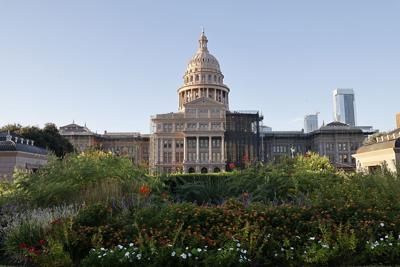The Texas House filed priority legislation on Thursday that would allow some families to use taxpayer dollars to fund their childrenĐÔĘӽ紫ý™s private school tuition, a bill that will likely rest at the center of one of the most contentious battles of this yearĐÔĘӽ紫ý™s legislative session.
Under House Bill 3, the state would distribute funds through state-managed education savings accounts that families could use for private school tuition and other educational expenses, like textbooks, transportation and therapy. Most participating students would receive 85% of the amount public schools get for each student through state and local funding.
The exact amount the state would make available to families is not immediately clear. The Texas Education Agency calculates that the stateĐÔĘӽ紫ý™s public schools receive roughly $15,503 per student, but that number includes funds from the federal government and other sources that may not directly support classroom instruction.
Children with disabilities would have eligibility to receive the same funding, plus additional dollars the state regularly provides for special education services in a public school.
The HouseĐÔĘӽ紫ý™s plan would put $1 billion toward the voucher-like education savings accounts, a priority for Gov. Greg Abbott. The programĐÔĘӽ紫ý™s future growth would be tied to public education funding increases.
Any child eligible to attend or already attending a public school could apply to the program. So could those enrolled in a public schoolĐÔĘӽ紫ý™s pre-K program and families with children already attending private schools.
ĐÔĘӽ紫ýśHouse Bill 3 delivers what Texans have been asking for: a true universal school choice program,ĐÔĘӽ紫ýť said House Speaker Dustin Burrows at the Texas Public Policy Summit. ĐÔĘӽ紫ýśAnd let me be clear, we have the votes to get it done.ĐÔĘӽ紫ýť
The HouseĐÔĘӽ紫ý™s voucher proposal has been much anticipated since the Senate passed its own package, Senate Bill 2, earlier this month. Though similar proposals have sailed through the Senate several times under Lt. Gov. Dan Patrick, the chamberĐÔĘӽ紫ý™s Republican leader, each have died in the House against opposition from Democrats and rural Republicans.
After a bruising primary last year, in which Abbott went after House Republicans who had opposed his priority voucher legislation in 2023, the chamber has more voucher supporters than ever. In November, a day after the general election, Abbott claimed to have 79 ĐÔĘӽ紫ýśhardcoreĐÔĘӽ紫ýť voucher supporters, more than the majority threshold to pass the long-time conservative priority issue.
But in recent weeks, there have been questions about the strength of that support. Some lawmakers, including former Speaker Dade Phelan, have said publicly they havenĐÔĘӽ紫ý™t made their mind up on whether to support a voucher program. TeachersĐÔĘӽ紫ý™ unions and public school supporters have been lobbying lawmakers hard against vouchers, saying such a program would drain resources away from their already struggling public schools.
Texas budget experts recently concluded in their analysis of the Senate voucher proposal that public schools, which receive money based on attendance, may experience a decrease in funding due to students leaving the public education system to participate in the voucher program.
Burrows pushed back against that argument Thursday, saying the state can both increase funding for public education and provide an alternative that would allow some families to put public dollars toward their childrenĐÔĘӽ紫ý™s private education. He called the approach the ĐÔĘӽ紫ýśTexas two-step planĐÔĘӽ紫ýť and noted the House had also filed House Bill 2, which would increase public school funding by raising the basic amount of funding public schools receive per student from $6,160 to $6,380.
Lawmakers have not increased that amount, known as the basic allotment, since 2019.
ĐÔĘӽ紫ýśWeĐÔĘӽ紫ý™re going to make historic investments in public education, because, despite what detractors say, you can provide meaningful opportunities to parents to choose where their child is [educated] and also take care of public education,ĐÔĘӽ紫ýť Burrows said.
He noted the HouseĐÔĘӽ紫ý™s voucher bill would provide ĐÔĘӽ紫ýśuniversal eligibility,ĐÔĘӽ紫ýť meaning most school-aged children in Texas would be able to apply. He also said the stateĐÔĘӽ紫ý™s education savings accounts program would prioritize students with disabilities and low-income students.
One possible point of contention between the House and the Senate might be who qualifies as a ĐÔĘӽ紫ýślow-incomeĐÔĘӽ紫ýť family. The SenateĐÔĘӽ紫ý™s proposal prioritizes access to students with disabilities and those with families whose annual income is up to 500% of the federal poverty level. That would include any four-person household earning less than roughly $156,000.
Burrows said students with disabilities would receive their ĐÔĘӽ紫ýśfull state entitlement,ĐÔĘӽ紫ýť which he said would increase under the HouseĐÔĘӽ紫ý™s legislation to increase public school funding.
Burrows called the education savings accounts proposed by the HouseĐÔĘӽ紫ý™s legislation a ĐÔĘӽ紫ýśtrue savings accountĐÔĘӽ紫ýť that would give parents the flexibility to ĐÔĘӽ紫ýśuse funds when and how they need them.ĐÔĘӽ紫ýť
He said the legislation would create options for parents who feel like their children are in bad public schools.
ĐÔĘӽ紫ýśSchool choice doesnĐÔĘӽ紫ý™t damage public schools or take money away from them,ĐÔĘӽ紫ýť he said. ĐÔĘӽ紫ýśSchool choice is important to the education ecosystem, creating more options for those who have none.ĐÔĘӽ紫ýť
But he stressed the lower chamberĐÔĘӽ紫ý™s two-pronged approach.
ĐÔĘӽ紫ýśFamilies deserve options, schools deserve resources,ĐÔĘӽ紫ýť he said. ĐÔĘӽ紫ýśOne without the other leaves Texas short.ĐÔĘӽ紫ýť





















